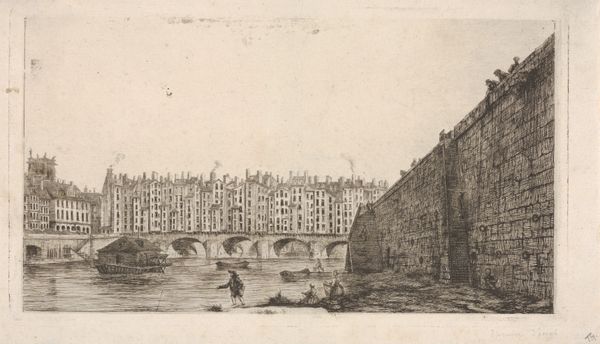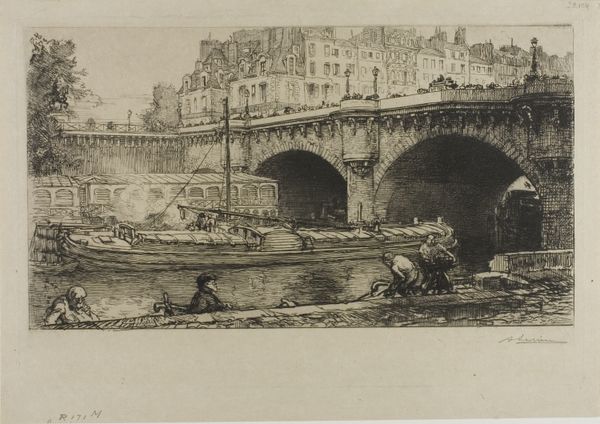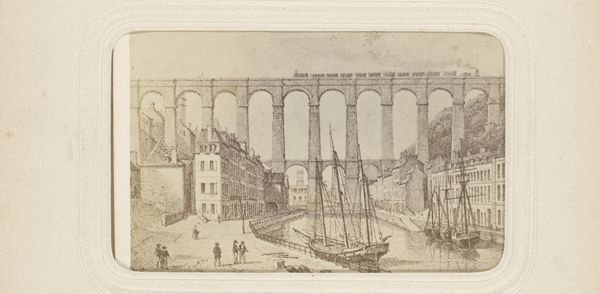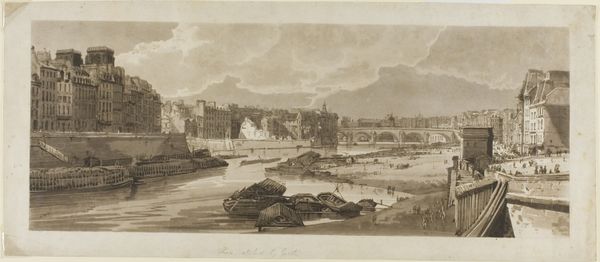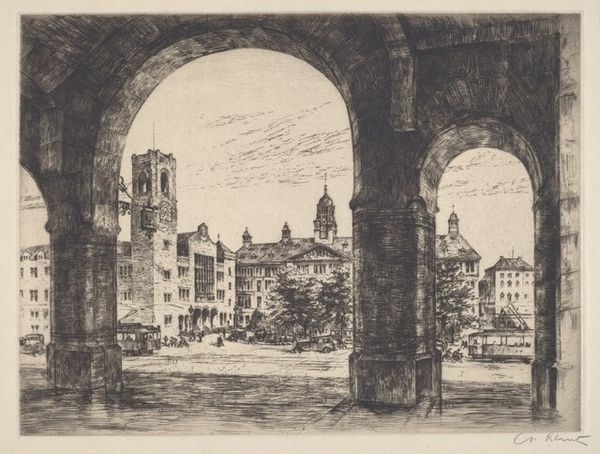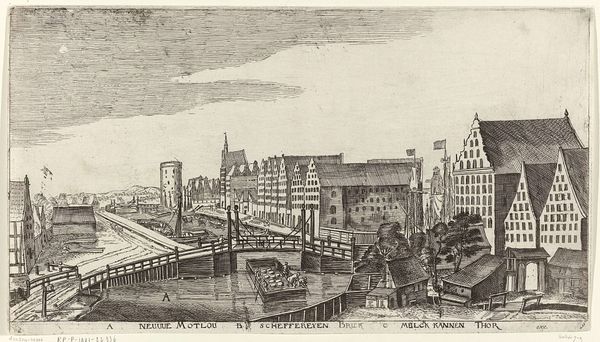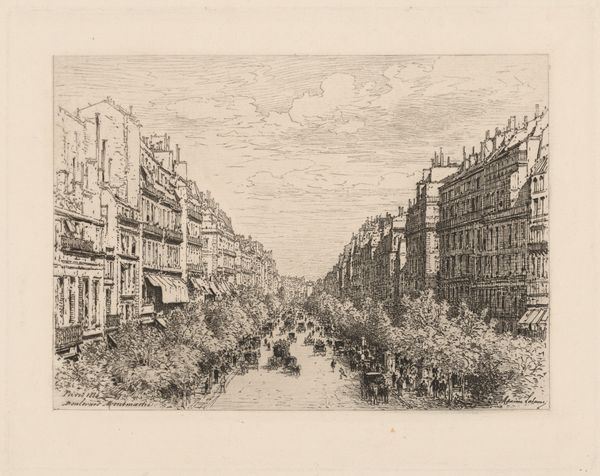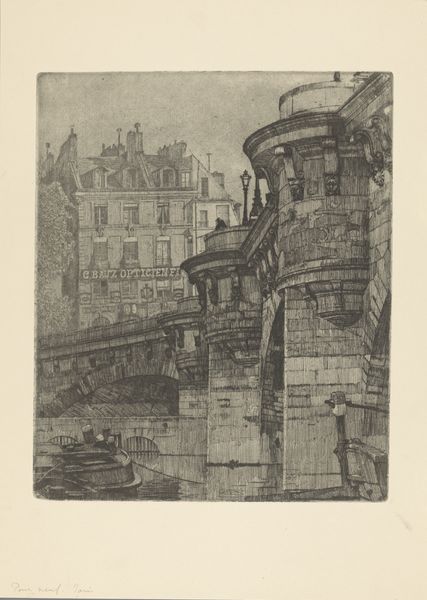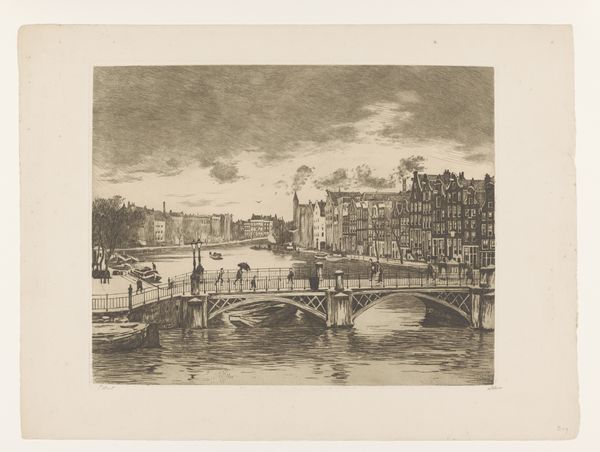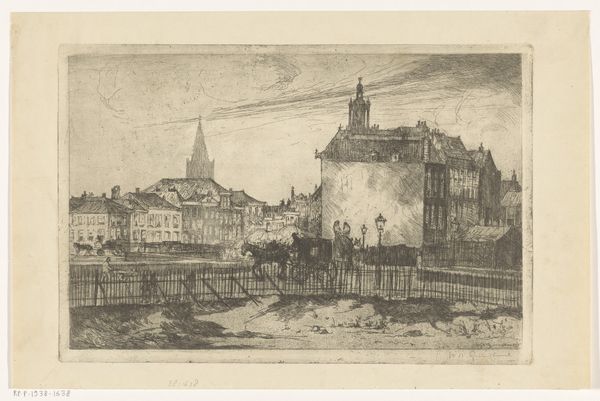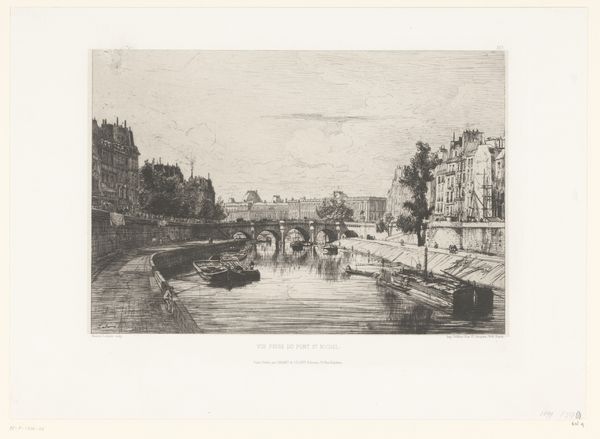
Le Pont-au-Change, vers 1784 (Pont-au-Change, Paris, circa 1784, after Nicolle) 1855
0:00
0:00
drawing, print, metal, etching
#
drawing
# print
#
metal
#
etching
#
landscape
#
cityscape
Dimensions: plate: 5 5/16 x 9 3/8 in. (13.5 x 23.8 cm)
Copyright: Public Domain
Charles Meryon created this etching of the Pont-au-Change in Paris around 1854, based on an earlier image. The printmaking process begins with a metal plate, usually copper or zinc. Meryon would have coated this plate with a waxy, acid-resistant ground. Then, using a sharp needle, he scratched away the ground, exposing the metal beneath. The plate was then submerged in acid, which bit into the exposed lines, creating recessed areas. This is the painstaking work that makes up the image. Once Meryon was satisfied, he’d remove the plate, ink it thoroughly, and wipe away the excess, leaving ink only in the etched lines. Finally, he would press the plate onto paper, transferring the image. The density of labor is obvious, and this method also allowed for a relatively large number of identical images to be produced, making it an ideal medium to depict the booming urban landscape of Paris. The result is a meditation on labor, politics, and consumption in the 19th-century Parisian landscape. It shows how a work’s material and making influence appearance, and how that imbues artwork with a broader cultural significance.
Comments
No comments
Be the first to comment and join the conversation on the ultimate creative platform.
